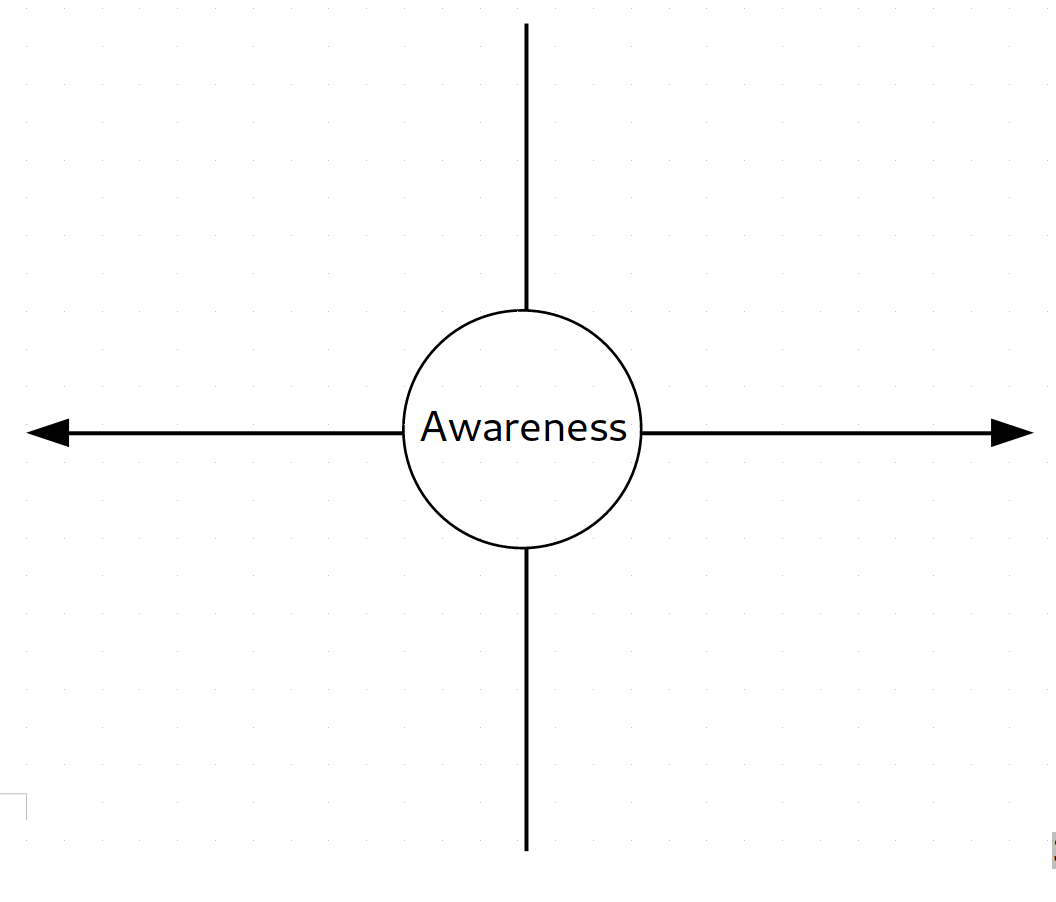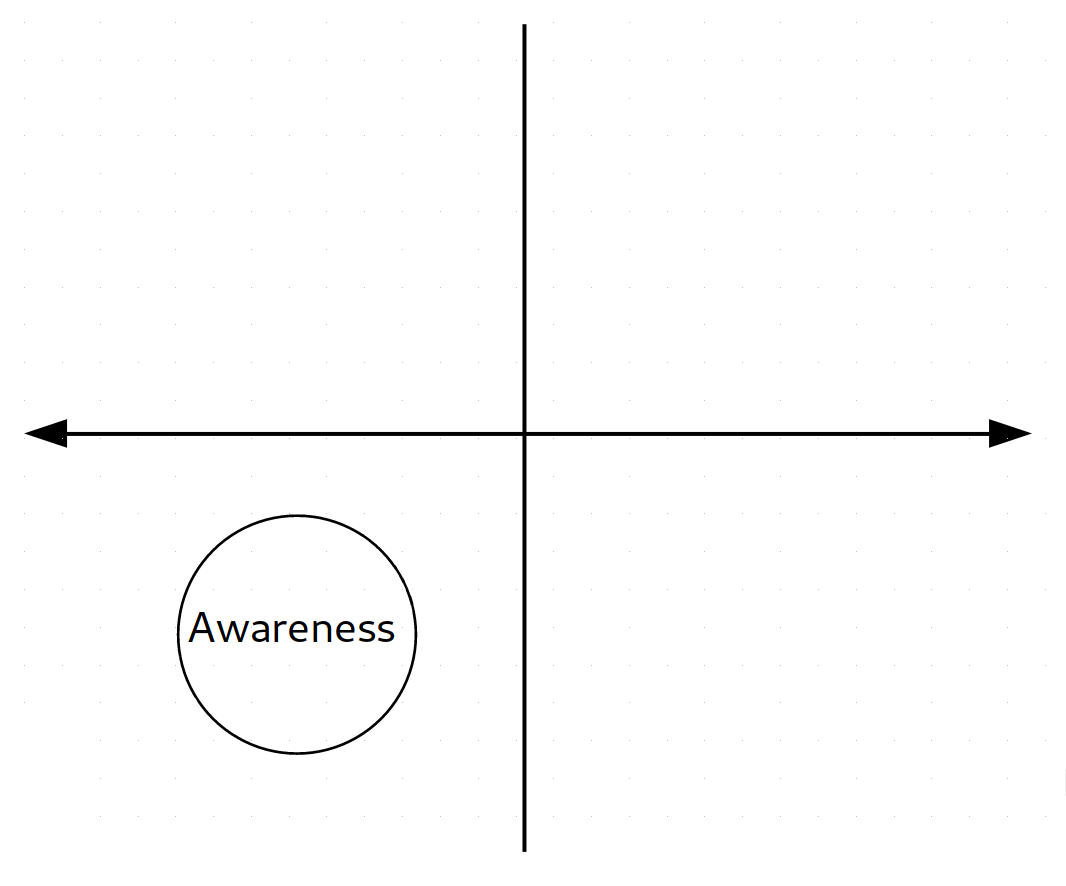Expanding Awareness
Off Target
When clients come to us initially their awareness is often narrowed in a rigid and problematic way. Clients tend to understand that this is the case themselves, it’s common to hear from clients that the reason they seek therapy is to get an independent third party’s thoughts, or to gain insight. In essence, they’re saying “I have a blindspot and I need help seeing what’s there.” All forms of psychotherapy help with increasing awareness in some fashion. From a matrix perspective the center circle can represent awareness as well as self concept. For the purposes of this book we’ll take a simple definition of awareness: recognition and perception of something, whether through the senses, or through cognition.
The Self and awareness being represented by the same circle is not a coincidence. In fact you’ll see many versions of the matrix with the phrase “Me noticing” in the center circle. Awareness relies on and serves the Self.
Using the matrix as case conceptualization tool we can think about awareness and any limitations as the center circle expanding and contracting while moving around the diagram. When we discussed contact with the present moment we used the visual metaphor of the center circle floating up and down on the vertical line and therefore coming into contact with degrees of inner and outer experience. But the center circle is not bound to the vertical line, it can float freely around the matrix. When clients walk into our offices for the first time their awareness is likely locked into one of the quadrants. Most frequently their awareness is narrowed in on the unwanted inner stuff that is showing up.
They may be totally and completely focused on the “negatives” in their life that they just can’t see past it. You’ll know when clients are locked into this rigid point of view by the way they speak. Phrases like “All I ever feel is sadness/anger/pain”, and “I can’t even remember the last time I felt happy,” are indicators of where their awareness is focused. It’s not uncommon for clients to list the highest number of items in the lower left quadrant. This is another cue that tells us they have been attending to this type of inner experience for a long time. The act of asking the four questions of the matrix forces clients to begin expanding their awareness beyond their norm.
The first question shifts awareness from a problem focused point of view to a values driven point of view, reconnecting to what matters. As we move on and discuss the unwanted inner experience and draw out how they respond to it the circle of awareness begins to expand to include their own behavior and its function.
As we complete the matrix for the first time with clients we shift awareness to touch on each of the quadrants and then re-position the circle into the center where it can be in contact with all four quadrants at once.
But that doesn’t mean their attention remains flexible and inclusive forever. Throughout our sessions with clients we are continuously assessing where their attention has shifted, pointing it out and asking clients to assess how that works for them. Through multiple exemplars we shape the behavior of flexibly attending to their experience in the service of their values.
The end goal of therapy is to train a flexible sense of encompassing awareness such that clients are able to reflect on their own actions and experience, notice connections between the two, and choose responses that work for them and their lives on the fly.
The matrix diagram is a useful tool in helping track where awareness is for clients at any given time. When doing a live sort during a mindfulness exercise for example, you and your clients can see their awareness shift in real time. As a clinician, for case note purposes you can use the matrix to track where your clients seem to be stuck and notate it in their file along with plans of how to expand awareness for future sessions.





